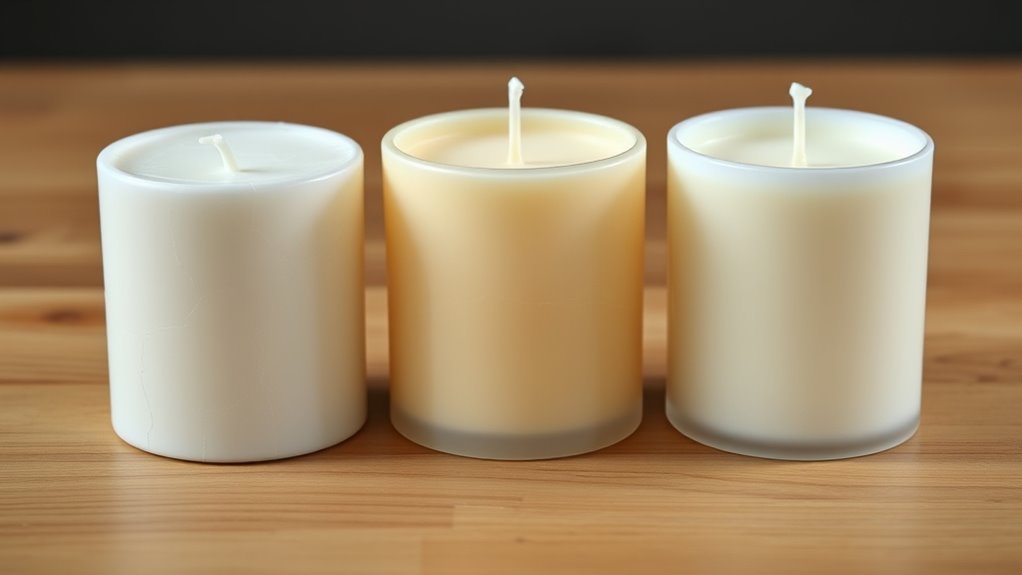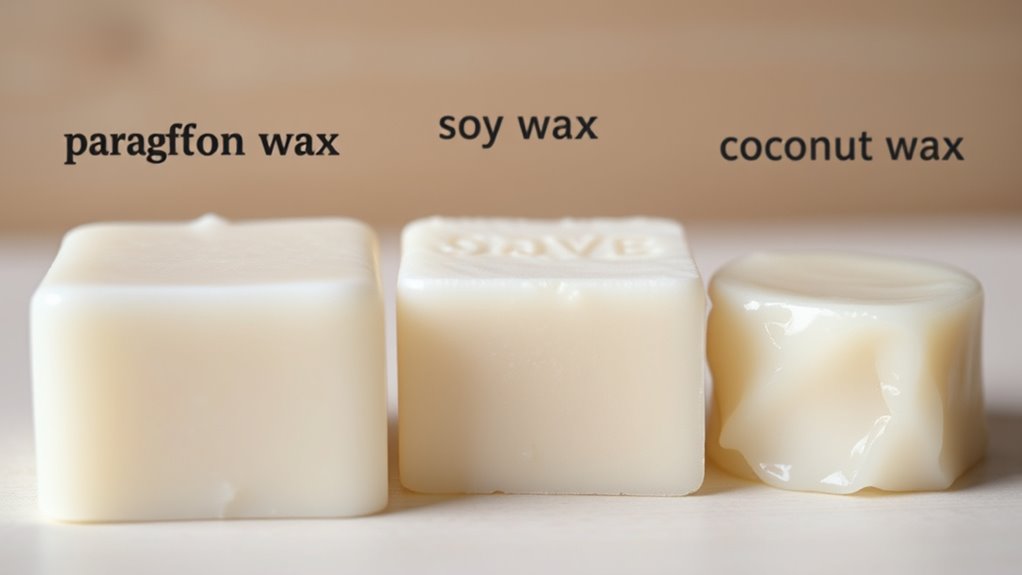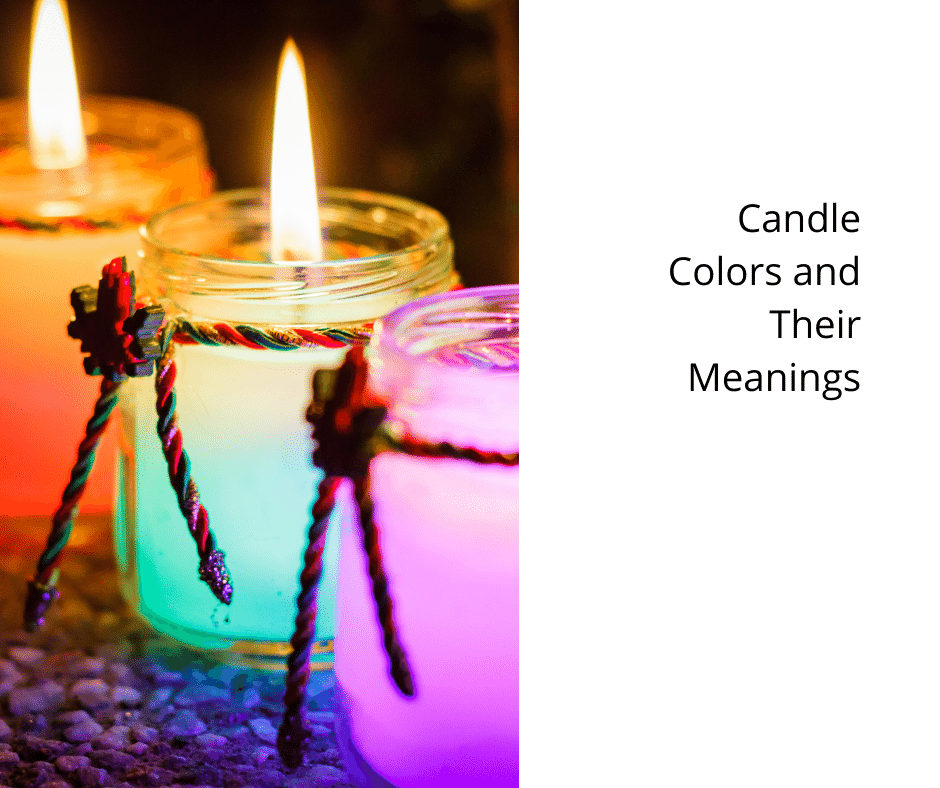Paraffin wax offers a strong scent throw, longer burn time, and versatile appearance but is petroleum-based, raising environmental concerns. Soy wax is natural and eco-friendly, providing a softer scent throw, steady burn, and a subtle aesthetic. Coconut wax combines natural qualities with a vibrant fragrance release and luxurious appearance, burning cleaner and often performing well with scents. To discover which wax best suits your style and needs, explore the details that follow.
Key Takeaways
- Paraffin offers a strong scent throw and long burn time but is petroleum-based and less eco-friendly.
- Soy wax is natural, eco-friendly, with a softer scent throw and steadiest, most even burn.
- Coconut wax provides vibrant fragrance release, a luxurious appearance, and cleaner, renewable burning qualities.
- Paraffin is versatile for shaping, whereas soy and coconut waxes tend to have more aesthetic appeal and softer textures.
- Choosing between them depends on environmental preferences, scent intensity needs, and desired candle performance.

When choosing the right wax for your candles, understanding the differences between paraffin, soy, and coconut wax can make all the difference. These wax types each have unique qualities that influence how your candle performs, especially regarding scent throw and burn time. Knowing what to expect from each helps you craft candles that meet your expectations and suit your space.
Paraffin wax is the most common and versatile option. It’s derived from petroleum, which allows it to hold a lot of fragrance oils, resulting in a strong scent throw. If you want your candle to fill a room with scent quickly and intensely, paraffin is a solid choice. Additionally, paraffin candles tend to have a longer burn time because the wax melts evenly and slowly, giving you hours of enjoyment. However, it’s worth noting that some people prefer to avoid paraffin due to its petroleum origin and potential environmental impact. Still, if scent throw and longevity are your priorities, paraffin delivers.
Soy wax, on the other hand, is a natural, plant-based alternative made from soybeans. It’s appreciated for its cleaner burn and eco-friendliness. Soy candles generally have a softer scent throw compared to paraffin, meaning they might not fill a large space as quickly, but they do release a delicate, consistent fragrance. The burn time of soy wax tends to be slightly shorter than paraffin, but it still provides a decent duration, especially when blended with other waxes or with carefully chosen fragrance loads. Soy’s slower melt rate can help create a more even, steady burn, which many candle enthusiasts find appealing. Plus, soy wax tends to have a better cold throw (the scent experienced before lighting), making it great for subtle, ambient fragrances. Soy wax composition can influence its melting point and fragrance compatibility, adding to its appeal.
Coconut wax is a premium, natural wax made from coconut oil and often blended with other waxes like soy to improve performance. It’s prized for its silky texture, beautiful appearance, and excellent scent throw. Coconut wax can deliver a strong, immediate scent release, making your candles smell wonderful right from the start. Its burn time is comparable to soy, but with the added benefit of a cleaner, more luxurious burn. Coconut wax also tends to hold fragrances well at higher temperatures, so your scent remains vibrant throughout the candle’s life. This makes it ideal if you want a candle that not only looks beautiful but also offers an impressive scent experience from start to finish.
Frequently Asked Questions
Which Wax Type Is Most Eco-Friendly?
You’re probably wondering which wax is most eco-friendly. Soy wax is a great choice because it’s biodegradable and comes from renewable crops, making it more sustainable. Coconut wax also ranks high, with its biodegradable properties and transparent sourcing practices. Paraffin, however, is less eco-friendly since it’s derived from petroleum and isn’t biodegradable. Prioritizing waxes with clear sourcing and biodegradability helps reduce environmental impact.
Are There Health Risks Associated With Each Wax?
Worried about wax worries? You’ll want to weigh health concerns and allergy risks. Paraffin wax may release potentially harmful chemicals, posing respiratory risks, especially for sensitive folks. Soy and coconut waxes are typically cleaner, but allergies to nuts or soy can cause reactions. Always consider your sensitivities, choose natural options when possible, and make certain proper ventilation. Staying informed helps you make safer, smarter candle choices for your health.
How Long Does Each Wax Typically Burn?
You wonder about burn time comparison and wax longevity factors. Paraffin candles usually burn 8-10 hours, soy candles last around 6-8 hours, and coconut wax can burn 10-15 hours. Factors like wax purity, wick size, and container shape influence burn time. To get the most out of your candles, choose high-quality wax and proper wick sizing, ensuring longer and cleaner burns for each type.
Can These Waxes Be Blended for Custom Candles?
Imagine blending your favorite colors into a masterpiece—that’s what wax blending does for your candles. You can definitely mix paraffin, soy, and coconut waxes to craft customized candles with unique burn qualities and aesthetics. Just ensure the melting points are compatible and test your blends for scent throw and burn performance. Wax blending opens endless creativity, letting you design candles that perfectly suit your style and preferences.
Which Wax Type Is Best for Sensitive Skin?
If you have sensitive skin, you’ll want a wax with low allergen potential and minimal risk of skin irritation. Soy and coconut waxes are generally better choices because they’re natural and less likely to cause reactions. Paraffin wax may trigger skin irritation in some people due to its chemical composition. Always check for additives or fragrances that could further increase allergen potential, and opt for pure, natural options whenever possible.
Conclusion
Now that you’ve explored paraffin, soy, and coconut waxes, you’re better equipped to choose your perfect candle. Like the hero’s journey in a classic story, your decision shapes the ambiance and experience you create. Whether you seek the warmth of tradition, the freshness of nature, or a tropical escape, remember that your choice reflects your unique style. Light up your space with confidence—your ideal wax adventure awaits.










